Angola to strengthen DTMA collaboration
During the week of 18-22 June 2012, the Drought Tolerant Maize for Africa (DTMA) project leader Tsedeke Abate, accompanied by CIMMYT maize breeder Cosmos Magorokosho and socioeconomist Girma Tesfahun visited Angola, where they received a warm welcome from the government. Dibanzilua Nginamau, from DTMA in Angola, accompanied them on their visit. The trip provided the DTMA team an opportunity to dialogue with government officials and seed company representatives.
The DTMA team met with the permanent secretary for the Ministry of Agriculture and Fisheries (MOARDF), José Rodrígues Prata Junior, on 19 June 2012. Prata Junior expressed his enthusiasm about working with CIMMYT and said that he is keenly following DTMA work with the Instituto de Investigaçao Agronómica (IIA). Maize is crucial to the Angolan economy; last year, the country imported 700,000 metric tons of maize grain. In 2011, DTMA facilitated the purchase of 14 tons of basic seed of the drought tolerant open pollinated variety ZM 523 (a CIMMYT-derived variety) from Agri Seed, a Zimbabwean company.
The team also attended the Angola National Coordinating Unit meeting at IIA-Huambo, opened by the institute’s director general Mpanzo Domingos and which brought together DTMA national partners. The team met with Antonio Faceira, the proprietor of Mundo Verde, a private company that works with DTMA in Angola.
Last year, Faceira supplied 600 tons of ZM 523 to the government at no cost for distribution to smallholder farmers. Next year, he hopes to expand this to 2,000 tons. The DTMA team visited the Mundo Verde farm which has an average yield for maize of 8 t/ha (the current national yield is about 0.7 t/ha).
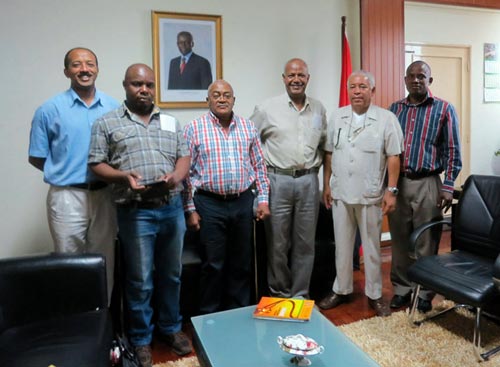 The CIMMYT team, accompanied by Nginamau and Faceira, had a second meeting with Prata Junior on 22 June 2012. Thanking him for the warm welcome and willingness to support DTMA work in Angola, Abate pointed out the need for favorable policies on variety release and the involvement of the private sector in developing a sustainable seed production and delivery system. Discussions during the meeting also emphasized the need for the agriculture ministry to set targets for increasing the maize yield within the next five years. Abate reiterated CIMMYT’s willingness to offer technical support towards achieving the government’s goal of accelerated maize production. Prata Junior welcomed the suggestions and asked for immediate support in capacity building. He also emphasized the need for the capacity to produce basic seed within Angola and pointed out that the country is importing an additional 20,000 tons seed for the coming season. Prata Junior said the introduction of early-maturing hybrids would be highly appreciated in light of recurrent droughts in the country. He also pledged to follow up with the MOARDF for the large-scale dissemination of DTMA varieties.
The CIMMYT team, accompanied by Nginamau and Faceira, had a second meeting with Prata Junior on 22 June 2012. Thanking him for the warm welcome and willingness to support DTMA work in Angola, Abate pointed out the need for favorable policies on variety release and the involvement of the private sector in developing a sustainable seed production and delivery system. Discussions during the meeting also emphasized the need for the agriculture ministry to set targets for increasing the maize yield within the next five years. Abate reiterated CIMMYT’s willingness to offer technical support towards achieving the government’s goal of accelerated maize production. Prata Junior welcomed the suggestions and asked for immediate support in capacity building. He also emphasized the need for the capacity to produce basic seed within Angola and pointed out that the country is importing an additional 20,000 tons seed for the coming season. Prata Junior said the introduction of early-maturing hybrids would be highly appreciated in light of recurrent droughts in the country. He also pledged to follow up with the MOARDF for the large-scale dissemination of DTMA varieties.
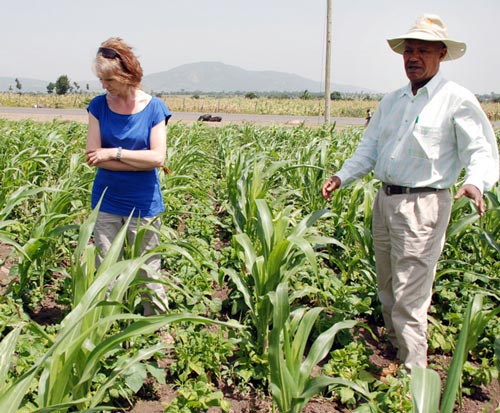 While highlighting that the work she was doing was still ongoing, Diana pointed out key strengths of the DTMA project from her assessment. “DTMA and all project personnel recognize the need to do this because it is generally acknowledged that approximately 70 percent of agricultural labor in sub-Saharan countries is provided by women,” says Diana. “Since women also play a central role in the welfare of household members and the community, understanding how drought tolerant technologies affect them is crucial to defining the impact of DTMA on poor farmers. Amongst many of the research counterparts, both public and private, there is recognition of the significance of women in agricultural systems,” she observes.
While highlighting that the work she was doing was still ongoing, Diana pointed out key strengths of the DTMA project from her assessment. “DTMA and all project personnel recognize the need to do this because it is generally acknowledged that approximately 70 percent of agricultural labor in sub-Saharan countries is provided by women,” says Diana. “Since women also play a central role in the welfare of household members and the community, understanding how drought tolerant technologies affect them is crucial to defining the impact of DTMA on poor farmers. Amongst many of the research counterparts, both public and private, there is recognition of the significance of women in agricultural systems,” she observes.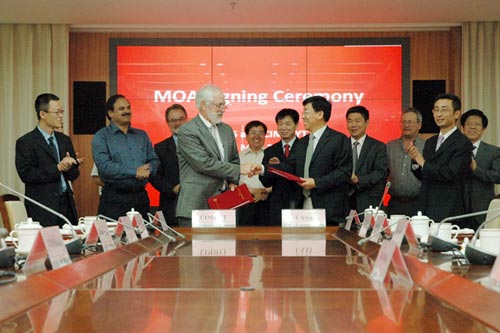 As indicated in Ren Wang’s speech, CIMMYT has the largest investment in China among CGIAR centers. Five collaborative research programs led by CIMMYT scientists stationed in China have been established at CAAS, Yunnan and Sichuan. This has created a new model for CGIAR-China collaboration and increased CIMMYT’s impact in China. CIMMYT is also the first international center to establish collaborative projects with the National Natural Science Foundation of China.
As indicated in Ren Wang’s speech, CIMMYT has the largest investment in China among CGIAR centers. Five collaborative research programs led by CIMMYT scientists stationed in China have been established at CAAS, Yunnan and Sichuan. This has created a new model for CGIAR-China collaboration and increased CIMMYT’s impact in China. CIMMYT is also the first international center to establish collaborative projects with the National Natural Science Foundation of China.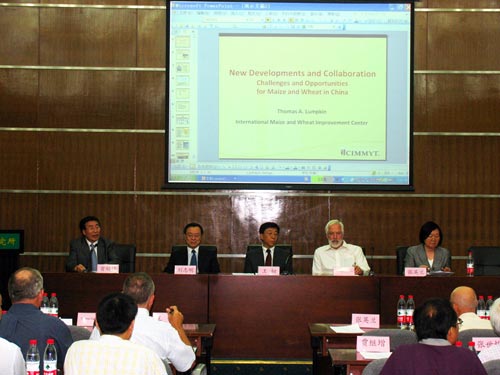 Bed planting has produced significant impact in the provinces of Gansu, Ningxia, Sichuan, Shandong, and Henan, bringing among other benefits a 30% reduction in input use. Bed planting is particularly advantageous at saving water. Conservation agriculture techniques combined with new winter wheat varieties have been broadly extended in traditional spring wheat areas, allowing farmers to take advantage of climate change to increase yields and reduce input use.
Bed planting has produced significant impact in the provinces of Gansu, Ningxia, Sichuan, Shandong, and Henan, bringing among other benefits a 30% reduction in input use. Bed planting is particularly advantageous at saving water. Conservation agriculture techniques combined with new winter wheat varieties have been broadly extended in traditional spring wheat areas, allowing farmers to take advantage of climate change to increase yields and reduce input use.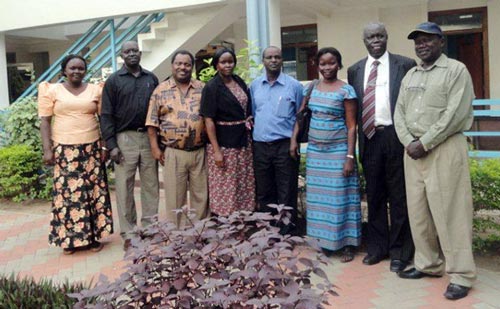 South Sudan, Africa’s newest country, is set to benefit from the project “Sustainable Intensification of Maize-Legume Cropping Systems in Eastern and Southern Africa” (
South Sudan, Africa’s newest country, is set to benefit from the project “Sustainable Intensification of Maize-Legume Cropping Systems in Eastern and Southern Africa” (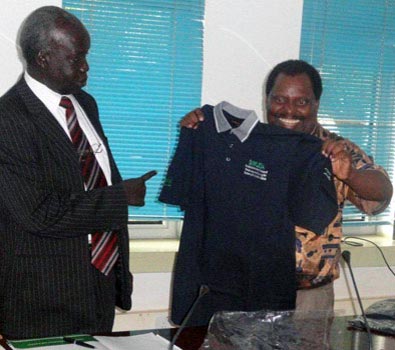 “ACIAR has availed initial funding for spillover activities,” said Mekuria. “The idea is to ensure that SIMLESA research results are quickly scaled out to countries like South Sudan and improve food security there.”
“ACIAR has availed initial funding for spillover activities,” said Mekuria. “The idea is to ensure that SIMLESA research results are quickly scaled out to countries like South Sudan and improve food security there.”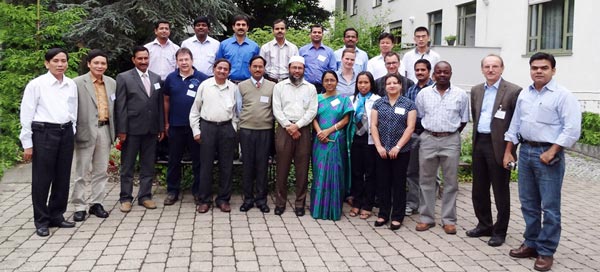
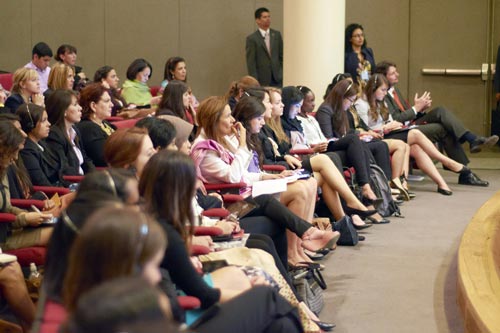 From 28 to 30 May, Mexico City held the G(irls) 20 Summit, a meeting in which 20 outstanding youths aged 18 to 20 represented each of the G20 countries, the African Union, and the European Union. This year, the priority issues for discussion and analysis were the role of women in agriculture and gender-based violence. CIMMYT was represented by Karen García, executive director of MasAgro, who shared some of her thoughts with the delegates on the role that science and technology can play in the development of rural women’s productive capacity.
From 28 to 30 May, Mexico City held the G(irls) 20 Summit, a meeting in which 20 outstanding youths aged 18 to 20 represented each of the G20 countries, the African Union, and the European Union. This year, the priority issues for discussion and analysis were the role of women in agriculture and gender-based violence. CIMMYT was represented by Karen García, executive director of MasAgro, who shared some of her thoughts with the delegates on the role that science and technology can play in the development of rural women’s productive capacity. One of the worst wheat diseases in China, stripe rust has appeared in yearly epidemics since 1950 and caused losses of more than 60 million tons. As China is among the world’s main producers of wheat, the CIMMYT China office in Chengdu, in collaboration with the Sichuan Academy of Agricultural Sciences (SAAS), organized a two-day workshop to address these issues.
One of the worst wheat diseases in China, stripe rust has appeared in yearly epidemics since 1950 and caused losses of more than 60 million tons. As China is among the world’s main producers of wheat, the CIMMYT China office in Chengdu, in collaboration with the Sichuan Academy of Agricultural Sciences (SAAS), organized a two-day workshop to address these issues.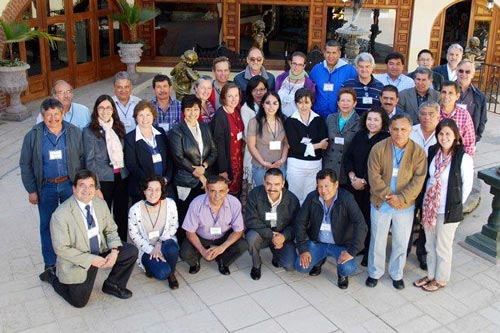 In order to define the research priorities for the Seeds of Discovery initiative in maize quality of landraces (a Strategic Initiative of both CRPs MAIZE and WHEAT funded by Mexico), a diverse group of food scientists, chemists, maize breeders, genebank curators, social scientists, and representatives of research institutions such as UNAM and Chapingo, met for a workshop to discuss future research on quality characteristics within native Mexican maize.
In order to define the research priorities for the Seeds of Discovery initiative in maize quality of landraces (a Strategic Initiative of both CRPs MAIZE and WHEAT funded by Mexico), a diverse group of food scientists, chemists, maize breeders, genebank curators, social scientists, and representatives of research institutions such as UNAM and Chapingo, met for a workshop to discuss future research on quality characteristics within native Mexican maize.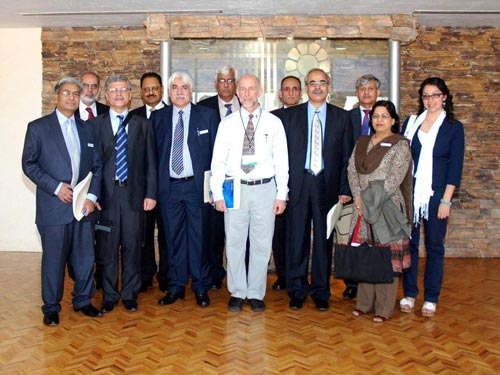 The strength and breadth of the fruitful five-decade partnership between Pakistan and CIMMYT have grown significantly in recent years: this was one conclusion from the visit to CIMMYT on 29 May 2012 of a 12-member team of senior civil servants, ambassadors, and corporate executives from Pakistan.
The strength and breadth of the fruitful five-decade partnership between Pakistan and CIMMYT have grown significantly in recent years: this was one conclusion from the visit to CIMMYT on 29 May 2012 of a 12-member team of senior civil servants, ambassadors, and corporate executives from Pakistan.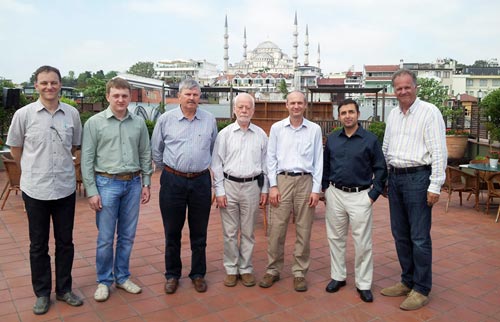 GRIS (
GRIS ( Have you ever wondered why the papers you have written on a piece of innovative research are rejected by your target peer-reviewed journals, or why your colleagues in similar projects are publishing with less difficulty? It could be that you are not writing in a style that is acceptable by the journals. For this reason Insect Resistant Maize for Africa (IRMA) and its sister project Water Efficient Maize for Africa (WEMA) have been conducting annual scientific writing workshops for their project scientists and students based in Nairobi. This year’s IRMA/WEMA Writing Workshop, which was attended by 15 participants, was held in Nakuru, Kenya during 07–11 May 2012.
Have you ever wondered why the papers you have written on a piece of innovative research are rejected by your target peer-reviewed journals, or why your colleagues in similar projects are publishing with less difficulty? It could be that you are not writing in a style that is acceptable by the journals. For this reason Insect Resistant Maize for Africa (IRMA) and its sister project Water Efficient Maize for Africa (WEMA) have been conducting annual scientific writing workshops for their project scientists and students based in Nairobi. This year’s IRMA/WEMA Writing Workshop, which was attended by 15 participants, was held in Nakuru, Kenya during 07–11 May 2012. On 14 May 2012, at Tikathali, Changathali Village Development Committee Centre (VDC) in Lalitpur, around 30 participants from MoA, NARC, seed companies, and CIMMYT were joined by 61 farmers (43 female, 18 male) and several graduate students and technicians. The event also saw active participation from senior district agriculture development officers from Lalitpur, Bhaktapur, and Kathmandu as well as the Crop Development Directorate of Nepal and the Seed Quality Control Center.
On 14 May 2012, at Tikathali, Changathali Village Development Committee Centre (VDC) in Lalitpur, around 30 participants from MoA, NARC, seed companies, and CIMMYT were joined by 61 farmers (43 female, 18 male) and several graduate students and technicians. The event also saw active participation from senior district agriculture development officers from Lalitpur, Bhaktapur, and Kathmandu as well as the Crop Development Directorate of Nepal and the Seed Quality Control Center. To share the good news, the Socioeconomics program hosted a get-together with the team in Nairobi, Kenya. During the cake cutting ceremony, the best gender paper award was dedicated to women farmers from Embu and Kakamega in Kenya’s Eastern and Western Provinces, where the data was collected. The Nairobi team also took the opportunity to initiate monthly seminars in order to share research findings hosted by the Global Maize Program and the Socioeconomics program and promote regular interaction among the team. The program directors, Bekele Shiferaw and B. M. Prasanna nominated Dan Makumbi, Hugo De Groote, Sika Gbegbelegbe, Fred Kanampiu, and Sarah Kibera, to form the organizing committee for the seminars.
To share the good news, the Socioeconomics program hosted a get-together with the team in Nairobi, Kenya. During the cake cutting ceremony, the best gender paper award was dedicated to women farmers from Embu and Kakamega in Kenya’s Eastern and Western Provinces, where the data was collected. The Nairobi team also took the opportunity to initiate monthly seminars in order to share research findings hosted by the Global Maize Program and the Socioeconomics program and promote regular interaction among the team. The program directors, Bekele Shiferaw and B. M. Prasanna nominated Dan Makumbi, Hugo De Groote, Sika Gbegbelegbe, Fred Kanampiu, and Sarah Kibera, to form the organizing committee for the seminars.